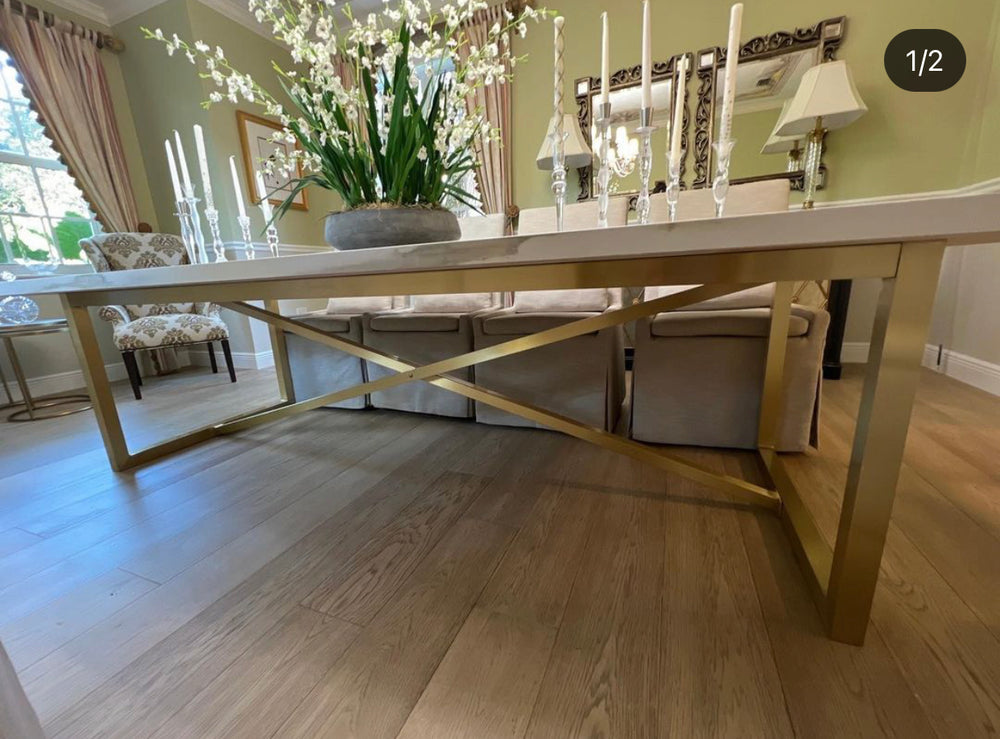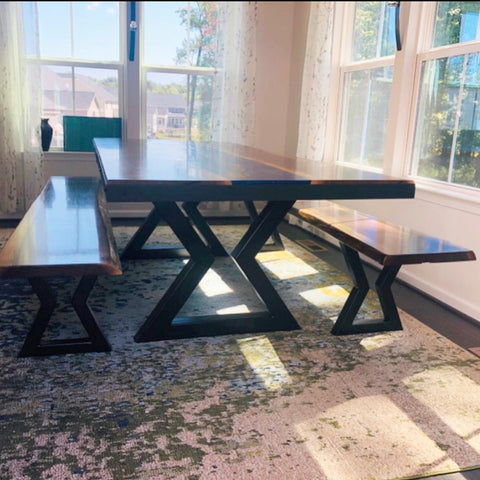Unique Dining Room Table Legs That Will Elevate Your Dining Area
Unique Dining Room Table Legs That Will Elevate Your Dining Area
Blog Article
From Typical to Modern: Locate the Perfect Dining Space Table Legs for Your Design
While classic styles such as cabriole and transformed legs stimulate a feeling of classic class, contemporary designs like barrette and geometric options offer a possibility for striking aesthetic rate of interest. As you take into consideration these elements, the question stays: just how can you effortlessly incorporate these varied leg styles to produce an unified dining experience?
Understanding Table Leg Styles
The variety of dining-room table leg designs can dramatically affect both the looks and functionality of the room. Each leg style adds special useful functions and aesthetic aspects, satisfying varied style choices and use needs. Understanding these designs is essential for selecting the right dining table that lines up with your overall indoor design vision.
As an example, conical legs provide a tidy, traditional look that can enhance an area's style, while pedestal bases offer stability and take full advantage of legroom, making them perfect for smaller sized areas. Barrette legs, a trademark of mid-century modern style, present a commercial panache, enabling a ventilated, open feeling. Similarly, trestle legs evoke rustic appeal, giving durable assistance and a feeling of timelessness.
In addition, the selection of materials plays a substantial function. Wood legs can bring warmth and structure, whereas metal options frequently communicate a sleek, modern ambiance. Eventually, comprehending table leg styles is essential for producing a cohesive eating area that shows individual design while making sure practicality and convenience. By attentively taking into consideration these elements, you can improve both the aesthetic and functional appeal of your eating area.
Traditional Table Leg Options
When selecting dining room table legs, traditional options usually personify ageless beauty and craftsmanship. These styles mirror a rich heritage and a dedication to quality, making them perfect for those who value timeless appearances.
One of one of the most renowned standard leg styles is the cabriole leg, characterized by its graceful rounded shape. This style frequently features decorative carvings and is most commonly discovered in Queen Anne and Chippendale furnishings. Another popular alternative is the transformed leg, which flaunts a collection of smooth, rounded shapes that give a classic appearance while preserving stability.
Additionally, the straight leg, while simple, provides a strong and basic structure that can blend flawlessly with a range of tabletop designs. For those attracted to ornate outlining, claw-and-ball feet legs evoke a feeling of magnificence and can function as a spectacular focal factor in any type of eating room.
Finally, stand bases, although not purely legs, offer an alternate standard choice that enables sufficient legroom and can be magnificently sculpted. Each of these standard leg designs adds to the overall ambiance of a dining-room, marrying feature with aesthetic charm.

Modern Table Leg Styles
Modern table leg styles provide a diverse series of styles that emphasize clean lines and innovative products. These designs usually prioritize performance while acting as striking focal factors within an eating area. Minimalist aesthetics prevail, with legs crafted from materials such as steel, glass, and crafted timber, which add to a ventilated and contemporary feel.
One popular style is the hairpin leg, defined by its slender, conical structure that provides security without frustrating the tabletop (dining room table legs). This style is commonly found in mid-century modern furniture and can effortlessly complement various table shapes. Another pattern is the use of geometric shapes, where legs might handle asymmetrical or angular forms, including aesthetic rate of interest and a touch of creativity

Blending Styles for Distinct Rooms
Often, property owners seek to develop unique eating spaces that reflect their personal style by blending numerous layout elements. This technique enables the unification of click this varied visual appeals, resulting in a harmonious yet unique setting. As an example, coupling a rustic wood table with streamlined, contemporary metal legs can develop an appealing comparison that elevates the room's total allure.
Additionally, integrating vintage table legs with contemporary table tops can stimulate a feeling of history while preserving a contemporary perceptiveness. Such combinations not only showcase specific preference however also urge imagination, allowing property owners to curate an area that feels both individual and welcoming.
Shade plays a crucial function in this blending process; picking table legs that complement or comparison with the existing color design can enhance visual passion. As an example, whitewashed legs can soften the daring of a dark table surface area, producing a balanced visual.
Tips for Selecting the Right Legs
Selecting the right table legs is crucial for achieving both capability and visual charm in your eating room. Begin by considering the overall style of your area. Typical setups take advantage of legs that include elaborate makings or turned styles, while modern rooms may require streamlined, minimalist styles.
Next, evaluate the height and stability of the legs. dining room table legs. Basic eating tables vary in between 28 to 30 inches in elevation, so ensure the legs complement this dimension for convenience. In addition, durable materials, such as wood or steel, can improve stability and longevity
Assess the leg shape as well-- options consist of straight, tapered, or stand designs. Straight legs use a traditional look, while conical legs can add a touch of beauty. Pedestal bases provide enough legroom and are ideal for smaller sized areas.
Conclusion
In summary, choosing the suitable eating space table legs needs careful factor to consider of both standard and modern-day styles. Traditional alternatives such as cabriole and transformed legs use timeless sophistication, while contemporary layouts like barrette and geometric forms give a modern touch. By harmonizing leg design, elevation, and material with the overall decor, a natural and inviting environment can be accomplished. Ultimately, the picked table legs should reflect the desired visual, enhancing the eating experience within the basics space.
The selection of eating room table leg styles can substantially influence both the aesthetic appeals and functionality of the area. Eventually, comprehending table leg designs is necessary for producing a cohesive eating area that mirrors personal style while making sure practicality site link and comfort.One of the most iconic conventional leg designs is the cabriole leg, characterized by its elegant rounded shape. Straight legs supply a classic look, while conical legs can include a touch of elegance.In recap, picking the optimal eating space table legs needs careful factor to consider of both typical and modern designs.
Report this page